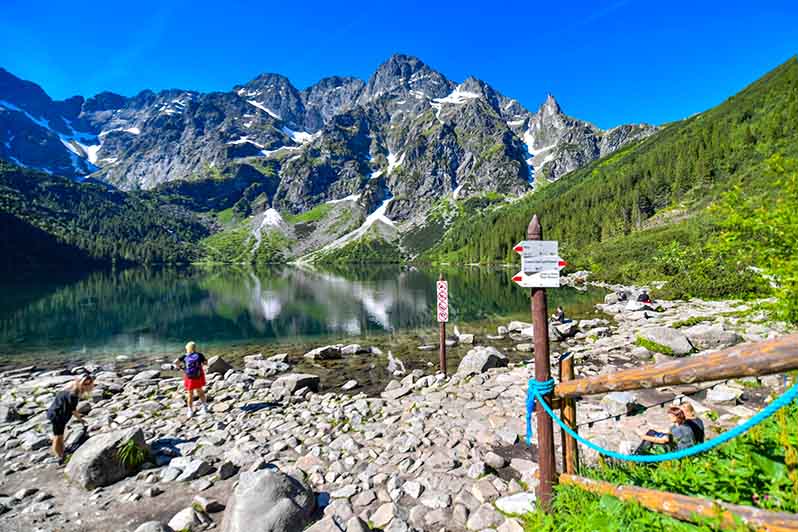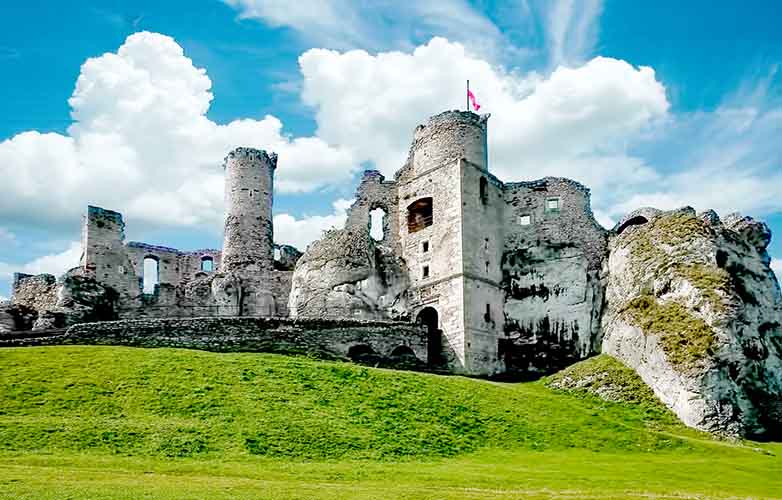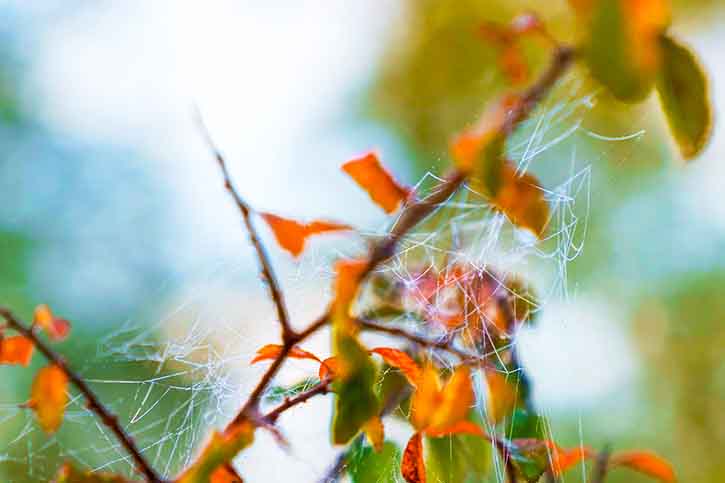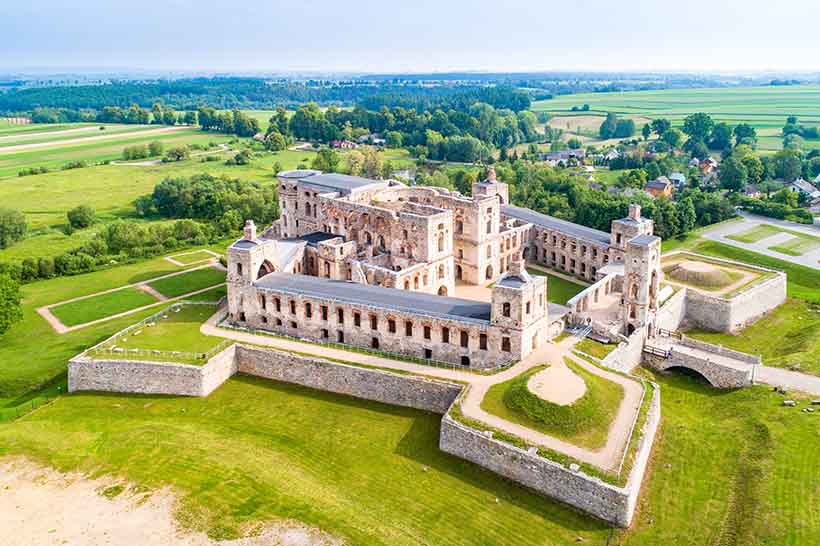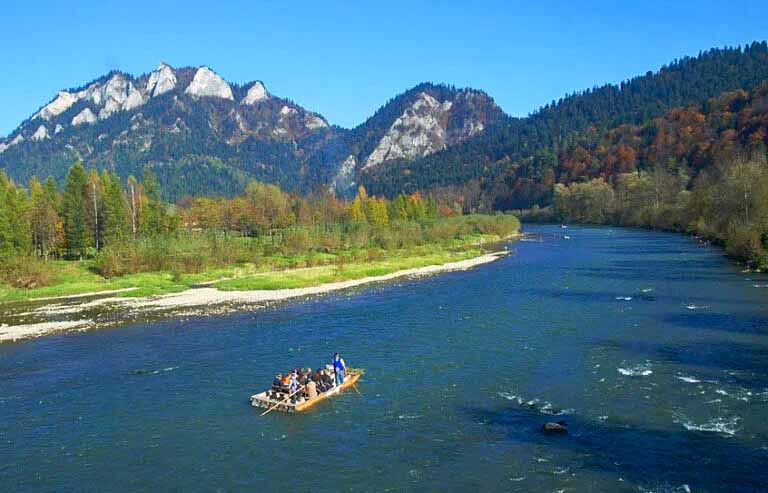Although the waters of Poland's fourth-largest river have marked borders for centuries, it is believed that the Bug River unites Poland, Ukraine and Belarus into one cultural whole, rather than dividing them. It is one of the few major European rivers that is not regulated, and its green banks are a mile-long nature reserve and wildlife sanctuary.
The Ukrainians call it Zachidnyi Buhem, the Belarusians Buhem. Its name is thought to be a remnant of the Germanic Goths who migrated from the Baltic to the Black Sea. The Germanic word bougen, which means bend or curve, is a reference to the numerous glaciations and bends the river has made on its way through glaciers and moraines. Another explanation of its name, which is closer to us, is a reference to Poland's adoption of baptism. It has been said that so far there is God and then there is paganism.
The first information about an important trade route between Poland and Ruthenia dates back to 1065. In the Middle Ages, it was used to transport salt from the Ruthenian salt mines, as well as furs, wax and honey. At the time of the Polish-Lithuanian Union, the Bug was the transport axis between the two countries and one of the most important trade routes. Grain and timber were floated down the river to Gdańsk and on the way back exotic goods from overseas, but also Toruń gingerbread.
At the time of the Partitions, the Bug River was on the border between the Polish Kingdom and the Russian Empire. At that time, an ecological catastrophe, as we would say today, occurred there - as a result of a huge flood in 1821, the river changed its course, and on the route of its former course, extensive old riverbeds were created, which still contribute to its beauty. In 1984, the Podlaski Przełom Bugu Landscape Park was established, and within its borders, the Szwajcaria Podlaska Nature Reserve, which is one of the most beautiful corners of Poland.
On its 772 km route, the Bug crosses three countries and passes through towns such as Brest, Wlodawa, Terespol, Drohiczyn, Czerwonohrad, Sokal and Wyszków. The Polish part is 587 km long.
In Verkhobuzh, in the Podlian Uplands of Ukraine, where the Bug springs from underground, it is barely a metre wide; at the village of Arciechów, where it joins the Narew and Zegrzyński Lake, it is many metres wide. The river is a sanctuary for many species of fish - fishermen will find roach, carp, pike and pikeperch here. The river valley is a habitat for beavers, swans, cranes and many rare species of butterflies.
Its varied coastline changes several times - in the area of Horodło, it is impressive for its numerous bends, while near Ślipcze its high loess hills give the impression of inaccessible cliffs.
The Bug can be explored by canoe. In the Mielnik area, there is a well-organised system of canoe hire, with marked routes ranging from a few to tens of kilometres. It is worth canoeing to the area of the border triangle - one of six such places in Poland, but the only one where the three borders meet on the water. As a result of a trilateral agreement between Poland, Ukraine and Belarus, there are trilingual border signs with the name of the Bug River.
It is quicker to reach the site from Sobibór, as it takes about an hour. In this village, you can also visit the former German extermination camp of 1942-1943, where there is now a museum.
There is also a unique local attraction - the water level measuring point in Włodawa, well known to Polish Radio listeners. The water level has been measured there every day since 1897. In response to the interest of tourists, the local authorities have made sure that everyone who visits this place takes home a unique souvenir - a water level reading certificate.
The Bug River Valley can also be admired from the saddle of a bicycle. The Podlaskie section of the Eastern Green Cycle Trail offers many opportunities to admire magnificent scenery, and care has been taken to ensure that cyclists can easily cover selected parts by canoe.
Podlasie offers a wide range of attractions, from culinary to cultural. And most importantly, it is not yet a place trampled by tourists. Here you can find traces of ancient cultures - Byzantine-Slavic, Tatar, and Olender. You can visit Orthodox churches, synagogues and sanctuaries. We will taste local delicacies which, like the Bug River, carry the culinary traditions of the countries united by this beautiful river.
The most interesting attractions along the Bug River are the medieval fortress and open-cast chalk mine in Mielnik, the horse stud farm in Janów Podlaski, the Holy Mountain of Grabarka called the Orthodox Częstochowa, the ‘Herbal Corner’ in Koryciny - an open-air museum and ethnographic park, and the monuments of Drohobycz and Siemiatycze.







